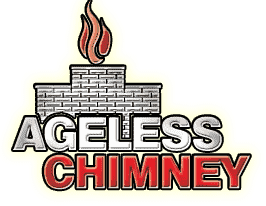Chimney Services in Greenwich Village, NY
What our clients say




Read About Us
Browse Fireplace Services
contact us
Chimney Services: The Importance of Hiring Certified Professionals in Greenwich Village, NY

Why Choose Certified Professionals?
Hiring certified professionals for your chimney services in Greenwich Village, NY ensures that all work meets safety standards. Ageless Chimney offers a team of experts trained in the latest techniques.
Certified professionals handle everything from chimney liner installation to chimney masonry repair, guaranteeing your chimney functions efficiently and safely. Choose Ageless Chimney for peace of mind.
Experienced Professionals
Our team in New York City has years of experience in chimney services, ensuring reliable and effective solutions.
Quality Assurance
We use top-quality materials and adhere to strict safety standards for all our services, from chimney repair to installation.
Customer Satisfaction
Ageless Chimney is committed to providing exceptional service, ensuring all our customers in Greenwich Village, NY are satisfied with the results.

Comprehensive Chimney Services
At Ageless Chimney, we provide a wide range of professional chimney services designed to meet all your needs. Whether you’re looking for chimney cap installation or a complete chimney cleaning service, our experts have you covered. Our team in Greenwich Village, NY is trained to handle all aspects of chimney maintenance and repair, ensuring that your home remains safe and comfortable year-round.
Our services include chimney liner installation, which is crucial for protecting your chimney structure and enhancing its efficiency. A properly installed chimney liner can prevent dangerous gases from entering your New York City home and reduce the risk of chimney fires. We also specialize in chimney masonry repair, addressing any damage to the brickwork or mortar to maintain the integrity and appearance of your chimney.
In addition to these services, we offer comprehensive residential chimney services, including regular inspections and maintenance to catch potential issues early. For those in need of more urgent assistance, our chimney repair services are prompt and thorough, ensuring minimal disruption to your daily life. At Ageless Chimney, we pride ourselves on delivering quality workmanship and excellent customer service to all residents of New York City. Trust us to keep your chimney in top condition.

Benefits of Regular Chimney Maintenance
Regular maintenance of your chimney is crucial to prevent hazardous conditions like chimney fires or carbon monoxide poisoning. At Ageless Chimney, we provide thorough inspections and cleaning to ensure your chimney is in top condition. Our team in Greenwich Village, NY uses the latest tools and techniques to perform a detailed assessment of your chimney’s health and functionality.
Scheduling routine chimney services not only enhances safety but also improves the efficiency of your heating system. A clean and well-maintained chimney allows for better airflow and reduces the chances of blockages that can lead to smoke and fumes entering your home. Our services include removing creosote buildup, which is a common cause of chimney fires, and checking for any structural damage that could compromise your chimney’s performance.
In addition to safety and efficiency, regular maintenance can extend the lifespan of your chimney. By addressing minor issues before they become major problems, you can avoid costly repairs and ensure your chimney serves you well for many years. Trust the certified professionals at Ageless Chimney to provide top-notch chimney services in Greenwich Village, NY. We are dedicated to keeping your home safe and warm, giving you peace of mind throughout the year. Contact us at 516-795-1313 today to get started!
